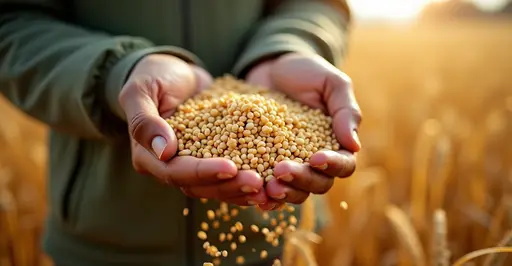Gene editing technologies like CRISPR are revolutionizing agriculture by creating nutrient-enhanced crops to combat global malnutrition. These innovations offer precise genetic modifications that boost vitamins and minerals in staple foods.

Revolutionary Gene Editing Technology Enhances Crop Nutrition
Scientists are harnessing cutting-edge gene editing technologies to develop crop varieties with significantly enhanced nutritional profiles, offering new hope in the global fight against malnutrition. With over 2 billion people worldwide suffering from micronutrient deficiencies, these technological advancements could transform food security for vulnerable populations.
CRISPR Technology: The Game Changer in Agriculture
The most significant breakthrough comes from CRISPR-Cas9 technology, which functions as molecular scissors to make precise genetic modifications. 'CRISPR allows us to target specific genes responsible for nutrient production with unprecedented accuracy,' explains Dr. Sarah Chen, a plant geneticist at the International Crop Research Institute. 'We're no longer limited by the slow pace of traditional breeding methods.'
Recent applications include biofortified rice varieties with increased beta-carotene content, enhanced wheat with higher iron and zinc levels, and cassava with improved vitamin profiles. These developments are particularly crucial for regions where staple crops form the bulk of daily diets but lack essential micronutrients.
Addressing Global Malnutrition Crisis
According to recent research, micronutrient deficiencies affect more than 2 billion people globally, with Vitamin A, iron, and zinc deficiencies being most prevalent. The World Health Organization estimates that malnutrition contributes to nearly half of all child deaths under five years old in developing countries.
'Gene editing offers a sustainable solution to address hidden hunger,' says agricultural researcher Dr. Marcus Rodriguez. 'By enhancing the nutritional content of staple crops, we can reach populations that traditional supplementation programs often miss.'
Successful Applications and Field Trials
Field trials across multiple continents have demonstrated promising results. Golden Rice, enhanced with beta-carotene through genetic modification, has shown significant improvements in Vitamin A status among test populations. Similarly, iron-biofortified beans and zinc-enhanced wheat varieties are undergoing large-scale testing in nutrient-deficient regions.
A comprehensive review published in 2025 highlights how CRISPR-mediated modifications are increasing climate resilience while simultaneously boosting nutritional content across various vegetable species. These developments are particularly important as climate change threatens traditional agricultural systems.
Regulatory Landscape and Public Acceptance
The regulatory environment for gene-edited crops varies significantly worldwide. While the United States and Japan have streamlined approval processes for crops without foreign DNA, the European Union continues to treat CRISPR-edited foods similarly to traditional GMOs, creating market fragmentation.
'Public education and transparent communication are essential for building trust in these technologies,' notes food policy expert Dr. Elena Martinez. 'Consumers need to understand the science behind these innovations and their potential benefits for global health.'
Recent proposals in the EU aim to create a two-tier regulatory system that would ease restrictions on certain gene-edited products, reflecting growing recognition of the technology's potential benefits.
Future Prospects and Challenges
Looking ahead, researchers are exploring multi-nutrient enhancement strategies and developing crops with improved nutrient bioavailability. However, challenges remain, including ensuring equitable access for smallholder farmers, addressing potential environmental impacts, and navigating complex intellectual property issues.
Recent studies emphasize the importance of collaboration between breeders and molecular biologists to develop interventions that avoid yield tradeoffs and work effectively under field conditions. As climate change intensifies, the need for climate-resilient, nutrient-dense crops becomes increasingly urgent.
The successful implementation of gene editing technologies in agriculture represents a promising pathway toward achieving global food and nutrition security, potentially transforming the lives of millions suffering from malnutrition worldwide.

 Nederlands
Nederlands
 English
English
 Deutsch
Deutsch
 Français
Français
 Español
Español
 Português
Português









